Nissan Titan Vs Toyota Tundra: Which Japanese Half-ton Truck Should You Choose?
Full-sized pickups are the bestselling vehicles in the United States auto industry and that has been the case for decades, with Ford, Ram and Chevrolet topping the sales charts year after year.
For a very long time, Toyota and Nissan dominated the small truck segment, and they still do today, but in seeing the popularity of the larger trucks, both of these Japanese automakers jumped into the half-ton fray as well.
Get a Quote on a New Nissan Titan or Toyota TundraEarly on, there was a huge gap in performance, capability, and feature availability between the Nissan Titan, the Toyota Tundra and the American pickups, but that gap has closed dramatically in the past decade. As a result, these two Japanese pickups – both of which are produced in the United States – have become far more formidable opponents for the bestsellers from the Big three. These models represent a chance for truck buyers to break away from the norm without compromising quality or performance. More importantly, for many longtime owners of any of the popular Nissan or Toyota cars or SUVs, the Titan and Tundra present a chance to deal with familiar faces at the same dealership where they purchased their previous vehicles.
If you have been shopping for a half-ton pickup and you are hung up between the Nissan Titan and the Toyota Tundra, you are in luck. Below, we have broken down the key figures and features for every major area of concern for a new truck shopper, highlighting which Japanese half-ton shines brighter.
Cabin Space
The Nissan Titan and Toyota Tundra are each offered in two different four-door cab configurations. The Nissan has the King Cab and the Crew Cab while the Toyota has the Double Cab and the CrewMax. Both trucks can be ordered with a split bench up front that leads to space for a total of six people, but the vast majority of these trucks have buckets seats and a five-person capacity. However, they both offer gobs of space for front and rear passengers.
Titan: The smaller Nissan Titan is the King Cab, which offers 40.9 inches (1,039 mm) of front headroom, 41.8 inches (1,062 mm) of front legroom 60.8 inches (1,544 mm) of front hip room and 63.3 inches (1,608 mm) of front shoulder room. In the rear seat, things are a bit tighter, with 38.7 inches (983 mm) of headroom 24.8 inches (630 mm) of legroom, 60.8 inches (1,544 mm) of hip room and 64.6 inches (1,641mm) of shoulder room.
Those who want more space for their rear passengers will want to opt for the Nissan Titan Crew Cab. This larger model offers 41 inches (1,041 mm) of headroom, 41.8 inches (1,062 mm) of legroom, 60.8 inches (1,544 mm) of hip room and 63.3 inches (1,608 mm) of front shoulder room, all of which is more or less the same as the King Cab. However, with 40.4 inches (1,026 mm) of headroom, 38.5 inches (978 mm) of legroom, 60.3 inches (1,532 mm) of hip room and 63.6 inches (1,615 mm) of shoulder room, the Crew Cab offers substantially more space for the rear riders.
Tundra: The smaller of the two Toyota Tundra body options is the Double Cab, which offers 39.7 inches (1,008 mm) of headroom, 42.5 inches (1,079 mm) of legroom, 62.6 inches (1,590 mm) of hip room and 65.7 inches (1,669 mm) of shoulder room up front. In the rear, you get 38.7 inches (983 mm) of headroom, 34.7 inches (881 mm) of legroom, 62.6 inches (1,590 mm) of hip room and 65.6 inches (1,666 mm) of shoulder room.
The roomier Tundra is the CrewMax, which offers identical dimensions around the front seats, but lots more space in the rear. This larger Toyota cabin offers 38.9 inches (988 mm) of head room, 42.3 inches (1,074 mm) of leg room, 60.4 inches (1,534 mm) of hip room and 65.5 inches (1,534 mm) of shoulder room, giving it a decisive advantage over the Double Cab – and over the Titan.
Bottom Line: Whether you are shopping for the smaller cab options or the roomier bodies, the Toyota Tundra has an advantage in terms of cabin space for passengers. The Titan offers a bit more headroom for the driver and passenger, but the Tundra offers more leg, hip and shoulder room, leading to an all-around more-spacious cabin.
Cargo and Towing
If you are shopping for a half-ton truck to use on the jobsite, or if you just use your truck for lots of labor-intensive projects around the house, both the Nissan Titan and the Toyota Tundra offer solid payload and towing capabilities. They don’t tow as much as the popular half-ton trucks for Ford, Ram and Chevrolet, but their capacities are more than enough for the most common trailers in the United States. For example, the two most common types of trailers in the United States are horse trailers and car trailers. The average two-horse trailer weighs around 5,500 lb while the average enclosed car trailer with a large car weighs in the 8,000 to 9,000 lb range.
Titan: The Nissan Titan with the standard 5.6-liter V8 is capable of towing up to 9,310 lb when properly equipped, with slightly lower numbers for different drivetrain and cab configurations. The most-capable Titan is capable of safely hauling up to 1,650 lb in the bed, which also varies slightly depending on the model and options. As a truck gets heavier, its payload capacity declines, so the loaded, four-wheel-drive trucks have lower payload ratings than the entry level, rear-drive trucks.
Tundra: The Toyota Tundra with the standard 5.7-liter V8 is capable of towing up to 10,200 lb when properly equipped while the payload capacity number tops out at 1,730 lb. As is the case with the Titan and every other truck on the market, each of these capacity numbers vary based on drivetrain configuration and the trim level chosen, but all of these trucks can comfortably tow a utility trailer, a horse trailer, jet skis, a boat or a lighter car trailer.
Bottom Line: This category goes to the Toyota Tundra, which offers better towing and hauling capabilities. It should also be noted that with the larger cabin, the Tundra also has more interior space for dry, secure hauling, so if you are buying a truck to put to work, the Toyota is clearly the better of these two.
Technology and Features
When trucks first became the bestselling vehicles in the United States, they were based on work vehicles, so there were very few amenities in their cabins. This was true of the larger American trucks and the smaller Japanese trucks, but as pickups became more popular as daily drivers, every option in the segment has slowly become packed with modern technology. With their cars being on the forefront of automotive technology, it should come as little surprise than the trucks from Nissan and Toyota come with loads of content that was once reserved for premium luxury vehicles.
Titan: The entry-level Nissan Titan S comes equipped with a 40/20/40 split bench front seat with a center seat that flips down to become an armrest and a 60/40 split folding bench in the rear. The seats in the Titan S are wrapped in cloth upholstery with stain resistant bolsters. When you step up to the SV, the seats are the same, but the upholstery is all stain resistant, not just the bolsters. The PRO-4X is the first model to come with standard bucket seats up front, featuring 8-way power adjust for the driver’s seat and package-specific cloth with embroidered logos. The PRO-4X also comes with a configurable center console between the front seats. Finally, the Titan Platinum Reserve features leather-wrapped front buckets and a rear split bench, a 4-way power adjustable passenger’s seat, heated and cooled front seats and heated outboard rear seats.
SEE ALSO: 2020 Nissan Titan Review: First DriveThe Nissan Titan in its base S trim level comes with an impressive list of standard features, beginning with the NissanConnect 8-inch touchscreen infotainment display, which includes access to Apple CarPlay, Android Auto, SiriusXM and Bluetooth connectivity to your smartphone for other streaming input. In addition to the touchscreen, the infotainment system can also be controlled with voice commands or with the illuminated buttons on the steering wheel.
Other standard features of the Titan S include the 7.0-inch Advanced Drive-Assist Display, air conditioning, cruise control, remote keyless entry, push-button ignition, power windows, power door locks, a manual tilt-and-telescoping steering column, a 12-volt DC power outlet, USB-A and USB-C ports, a six-speaker sound system and EasyClean vinyl flooring. When you step up to the Titan SV, you also get the Fine Vision electroluminescent gauges, a front overhead storage console, carpeting, the hands-free text messaging system, Intelligent Cruise Control and the NissanConnect Services powered by SiriusXM.
The Titan PRO-4X model adds dual-zone climate control, rear cooling vents, the Nissan Intelligent Key, rain-sensing windshield wipers, an auto-dimming rearview mirror, the HomeLink universal garage door opener, a center console with 120-volt and 12-volt outlets, a lockable rear seating area organizer, the fold-flat rear floor, a leather-wrapped steering wheel, two rear USB ports and the NissanConnect 9.0-inch touchscreen display with Nissan Door-to-Door Navigation.
Finally, when you step up to the Nissan Titan Platinum Reserve, you get a Remote Engine Start System with Intelligent Climate Control, proximity activation of the exterior lights, a power tilt-and-telescoping steering column, a heated steering wheel and a Fender premium 12-speaker audio system, which includes a center speaker and subwoofer.
Tundra: The Toyota Tundra in its base SR trim comes with a 40/20/40 split folding front bench seat and a 60/40 folding rear bench, all of which are wrapped in cloth. The same seating configuration and upholstery is also standard in the SR5 models, but when you buy a Tundra Limited, you get standard front buckets that are wrapped in leather and heated, with 10-way power adjust for the driver and six-way power adjust for passenger. The TRD Pro comes with the same front buckets, except they are wrapped in black package-specific leather with unique embroidery. The Platinum and 1794 models come with perforated leather upholstery with heated and cooler front buckets with 12-way power adjust for the driver and six-way power adjust for the passenger.
In terms of technology, the entry level Tundra SR comes with a ton of standard content, starting with the 7-inch touchscreen infotainment system, which offers access to Android Auto, Apple CarPlay, Amazon Alexa, SiriusXM and Bluetooth connectivity for wireless streaming. In addition to the touchscreen, the driver can his voice recognition to make changes to the infotainment system, or they can use the buttons on the steering wheel. Other standard features of the Tundra SR include air conditioning, an integrated backup camera system, power windows, power door locks, remote keyless entry, a tilting steering column, three USB ports, three 12-volt power outlets and carpeting.
SEE ALSO: 2020 Toyota Tundra TRD Pro ReviewWhen you step up to the Tundra SR5, you get an 8-inch touchscreen with all of the functions of the base system, a 9-speaker sound system, a power rear sliding window, an auto-dimming rearview mirror, the Homelink universal garage door opener and an overhead storage console. The Limited trim level comes with the same infotainment system, but it adds Dynamic Navigation, automatic dual zone climate control, a leather-wrapped steering wheel with a full spread of controls, the Smart Key System and a fixed center console with vents for the second row. The TRD Pro is similar to the Limited models, except it comes with a JBL 12-speaker sound system.
Finally, the Toyota Tundra in Platinum or 1794 trim comes with every premium feature mentioned above, including the 8-inch touchscreen with Dynamic Navigation and the JBL sound system, along with tilt and telescoping leather-wrapped steering wheel.
Bottom Line: Both the Nissan Titan and Toyota Tundra come with loads of premium standard content that increases as you get further into the model lines. The Titan has the advantage at the lower-priced models with their larger standard screen, but as you get into the premium models, the Tundra has more technology across more trim levels. If you are buying a lower-priced truck and you want the most bang for your buck, the Titan is the better choice, but among the higher-priced models, the Tundra offers more.
Powertrain
Since the Nissan Titan was introduced for the 2004 model year, it has only ever been offered with a V8 engine. On the other hand, the Toyota Tundra has been offered with a variety of engines over the past decade, including an entry-level V6 and a pair of V8s, but for the 2021 model year, only a single V8 is offered across the model range. Oddly, as Ford, Ram and Chevy all introduced smaller, more efficient engines to complement their V8s, Nissan and Toyota have both gone all-in on V8 power.
Titan: The Nissan Titan comes standard with a 5.6-liter V8 that delivers 400 horsepower and 413 lb-ft of torque. That power is sent towards the wheels by means of a 9-speed automatic that is standard on all models. Rear-wheel-drive is standard on Titan S and SV models while four-wheel-drive is optional, but with Pro4X and Platinum Reserve models, four-wheel-drive is standard.
Tundra: Every new Toyota Tundra comes standard with a 5.7-liter V8 that packs 381 hp and 401 lb-ft of torque. The standard V8 engine is mated to a six-speed automatic transmission that is also standard, with the buyer’s choice of rear- or four-wheel-drive on Tundra SR, SR5 and Limited models. Four-wheel-drive comes standard on Toyota’s TRD Pro, 1794 and Platinum models.
Bottom Line: Nissan takes the win in the powertrain battle, offering more horsepower, more torque and a modern, 9-speed transmission. While the advantage of the extra power is clear, the newer transmission in the Titan leads to better acceleration on the low end and lower engine speeds on the top end, leading to better fuel economy and less wear on the engine.
Fuel Economy
While we are seeing more hybrid and electric trucks coming to market right now, the half-ton pickup segment is one of the largest and heaviest, so these aren’t the most fuel-friendly vehicles on the road. Fortunately, advancements in engine and transmission technology allow the V8 engines in the Nissan Titan and Toyota Tundra to be far more fuel-friendly than the old school V8 pickups.
Titan: The Nissan Titan with the standard combination of the 5.6-liter V8, the nine-speed automatic transmission and rear-wheel-drive received an EPA rating of 16 mpg around town, 21 mpg on the highway and 18 combined. In four-wheel-drive form, there isn’t much decline thanks to the advanced transmission and transfer case, offering 15 mpg (15.2 L/100 km) around town with the same 21 mpg (11.1 L/100 km) on the highway and 18 mpg (13.4 L/100 km) combined.
Tundra: The Toyota Tundra with the standard V8 and the 6-speed automatic transmission with the rear-drive layout is rated at 13 mpg (17.7 L/100 km) around town, 18 (13.6L/100 km) on the highway and 15 mpg (15.9 L/100 km) combined. Four-wheel-drive Tundras are expected to return a bit less at 17 mpg (14.2 L/100 km) highway, 14 mpg (18.0L/100 km) combined and the same 13 mpg (16.3 L/100 km) around town.
Bottom Line: The Nissan Titan has a 9-speed automatic transmission, giving it an advantage in fuel economy in every situation. While the difference in MPGs between the two is relatively small in the grand scheme of things, the Titan is nearly 25% more efficient than the Tundra on the highway and almost 30% more efficient over a full tank of gas with mixed driving.
Safety
Due to the size, shape and mass of the vehicle, half-ton trucks are among the safest on the road for the people inside of them, but automakers have done a ton of work in making trucks like the Nissan Titan and the Toyota Tundra safer for everyone on the road. This includes elaborate safety systems that engage in the event of a crash as well as high tech helpers to help prevent accidents before they happen. In the case of both of these trucks, most of the safety features are standard across all models, but some of the newer technology is reserved for the premium trim levels.
Titan The Nissan Titan S and SV come with a lengthy list of standard safety features, starting with an elaborate air bag system which includes single-stage driver and dual-stage front-passenger supplemental air bags with seat-belt classification sensors, driver and front-passenger seat-mounted side-impact supplemental air bags, driver and front-passenger supplemental knee air bags and roof-mounted curtain supplemental air bags with a rollover sensor.
The S and SV Titans also come with a huge spread of safety systems, including Lane Departure Warning, Intelligent Forward Collision Warning, Automatic Emergency Braking with Pedestrian Detection, Blind Spot Warning, Rear Cross Traffic Alert, RearView Monitor, Rear Sonar, Rear Automatic Braking, High Beam Assist, Hill Start Assist, Trailer Sway Control, Active Brake Limited Slip, Tire Pressure Monitoring and Vehicle Dynamic Control with Traction Control. The Titan PRO-4X adds the Traffic Sign Recognition and Hill Descent Control systems while the Platinum Reserve models add the Intelligent Around View Monitor, front and rear sonar and a trailer brake controller.
Tundra: Every new Toyota Tundra comes with the eight airbags, the Toyota Safety Sense System and the Star Safety System. The airbag system includes driver and passenger advanced airbags, driver and passenger seat-mounted side airbags, driver and passenger knee airbags and front and rear roll-sensing side curtain airbags. Toyota Safety Sense includes a Pre-Collision System with Pedestrian Detection, Lane Departure Alert, Automatic High Beams and Dynamic Radar Cruise Control while the Star Safety System adds Vehicle Stability Control, Traction Control, Antilock brakes with electronic brake force distribution, Brake Assist and Smart Stop Technology.
Other standard safety features of every new Tundra include a Tire Pressure Monitor System, an anti-theft system with engine immobilizer, Trailer-Sway Control and the Integrated Trailer Brake Controller. Limited and TRD Pro models get a slightly different anti-theft system with an alarm while Platinum and 1794 models feature front and rear parking assist sonar, Blind Spot Monitor with Rear Cross-Traffic Alert and an anti-theft system with a glass breakage sensor.
Bottom Line: Once again, the Nissan Titan and the Toyota Tundra have similar features, but many of the high-tech features of the higher-priced Titan models are standard in the lower-priced Tundras, giving the Toyota the advantage in safety features.
Styling
The half-ton truck segment is dominated by big, bold styling and while the Nissan Titan and Toyota Tundra were more subdued in their exterior appearance when they entered the market, the most recent designs follow the trend set by the hot-selling American pickups. This includes a distinct styling language on the big, bulky form which combines luxury and sportiness, with just a touch of technology coming from the modern lightning systems.
Titan: The Nissan Titan has one of the most unique, polarizing designs in the half-ton segment. This is based around the front end, which showcases a set of LED headlights that pretty much fill both sides of the face of the truck. They flank and equally-huge grille which hovers over a small, central opening flanked by the fog light locations in the outer corner of the front bumper. On some models, that huge grille is bright silver and on others, it is black, but in either case, the headlights and grille dominate the front end of the newest Titan. Along the sides, the Titan has an array of two-tone wheel options which vary based on the trim level chosen, but all models have wheel flares that encompass the entire area around them, leading to a muscular, flared look at the fenders and bedsides. With the shape of the hood, cab and bed, the Titan has a very upright look in every trim level, making it feel bigger than it really is.
Tundra: The Toyota Tundra has a very distinct styling language which has evolved nicely over the years and the current iteration is arguably the best-looking to date. Up front, the Tundra has sleek, LED headlights that slightly wrap around into the fenders and flank the large, central grille opening. Atop the grille is an integrated air inlet at the leading edge of the hood and the shape of the front bumper and fascia as you travel towards the ground gives the Tundra a very powerful face. Along the sides, the Toyota wheel flares aren’t as large, but they are just as prominent as those on the Nissan, bolstering the sporty look of the Tundra. Aiding in the effort of creating a sleek, sporty half-ton is the tapering rear roofline and the curved side glass, both of which help to give the Tundra a very fluid look from the side.
Bottom Line: With the Nissan Titan, it seems that you either like the exterior styling or you do not. We do not, but we do like the modern styling of the Toyota Tundra, with far-more-appealing features from front to rear.
Pricing
The Nissan Titan and Toyota Tundra both come with loads of standard content which includes standard V8 power, which makes it easier for customers to pick the features that they want. The downside to this approach of “loaded is standard” is that they are on the more expensive end of the spectrum when it comes to enty level pricing. Below, we take a look at the pricing for all of the key configurations that are currently available. As you read through them, keep in mind that the smaller four-door, rear-drive variant of the Ford F-150 starts at $35,715, the Ram 1500 starts at $34,490 and the Chevrolet Silverado 1500 starts at $34,510.
Titan: The Nissan Titan S with the King Cab form and rear-wheel-drive starts at $38,545 while the same truck with four-wheel-drive starts at $41,875. When you go with the Titan S Crew Cab with rear-drive, it starts at $41,375 while the four-wheel-drive version starts at $44,505.
When you step up to the Titan SV, the King Cab with rear-wheel-drive starts at $42,485 and four-wheel-drive starts at $45,715 while the Crew Cab version starts at $44,825 for rear-drive and $47,955 for four-wheel-drive.
The Nissan Titan PRO-4X, which is only currently available with the Crew Can and four-wheel-drive, starts at $52,385 while the range-topping Platinum Reserve starts at $58,135 for two-wheel-drive and $61,375 for four-wheel-drive.
Tundra: The Toyota Tundra SR in Double Cab form with rear-wheel-drive starts at $35,620 while adding four-wheel-drive bumps the starting price up to $38,670.
When buyers step up to the Tundra SR5, they can chose from the Double Cab or the CrewMax cab. The Double Cab SR5 starts at $37,310 with rear-wheel-drive or $42,150 for four-wheel-drive while the CrewMax versions start at $40,910 for rear-drive or $44,875 for 4WD.
The Tundra Limited is currently only offered with four-wheel-drive, starting at $47,425 for the Double Cab or $51,255 for the CrewMax version. The TRD Pro is also a 4WD-only model, starting at $50,720 for the Double Cab or $54,995 for the CrewMax.
The Tundra Platinum and 1794 models are both only offered with the CrewMax cab and four-wheel-drive, with the Platinum starting at $54,740 while the 1794 models start at $54,235.
Bottom Line: Both the Titan and Tundra have base starting prices that are higher than the American competitors, but the Toyota starts substantially lower than the Nissan. Along the same lines, the premium trim levels for the Tundra cost less than comparable versions of the Titan, giving Toyota the pricing advantage from one end of the lineup to the other.
Verdict Nissan Titan vs Toyota Tundra
If you are shopping for a new half-ton truck and you like the idea of going a different direction from the millions of people every year who buy a pickup from one of the American Big Three, the Nissan Titan and Toyota Tundra are both solid options. If your key concerns are power and fuel economy, then the Titan is the truck for you, but if you want the most interior goodies for your money along with more interior space, more working capabilities and a lower price, the Tundra is the better option for you.
Become an AutoGuide insider. Get the latest from the automotive world first by subscribing to our newsletter here.
Patrick Rall has been covering the automotive industry for over a decade, but was born into car culture. Having grown up in his father's performance shop, he spent extensive time at the track, driving and wrenching on various types of vehicles.
More by Patrick Rall



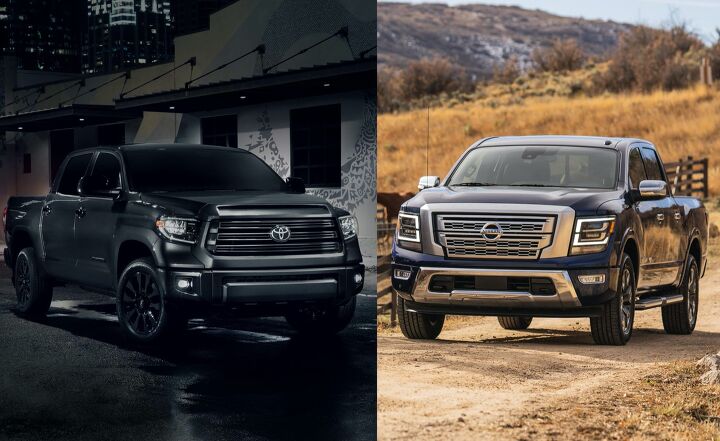
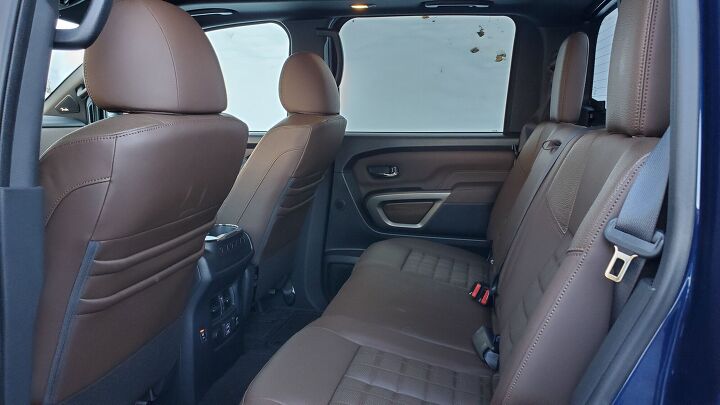



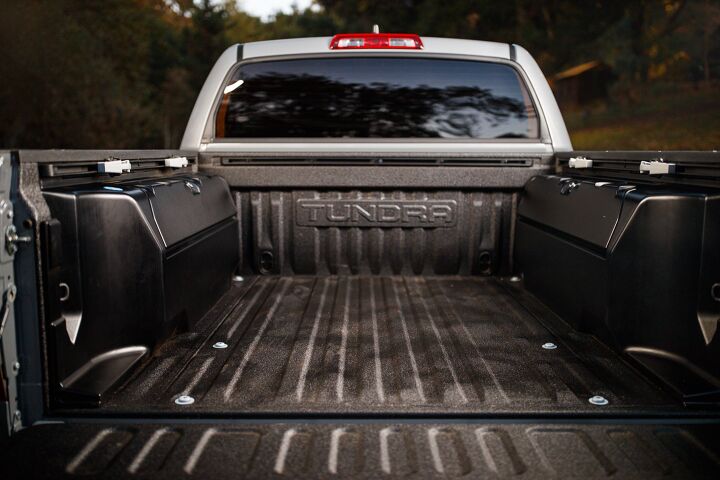




























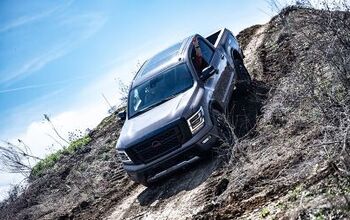
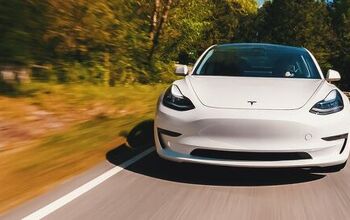
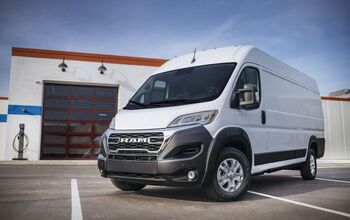
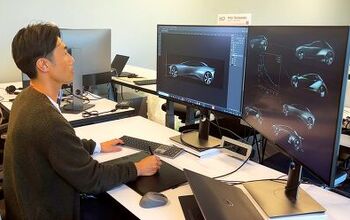

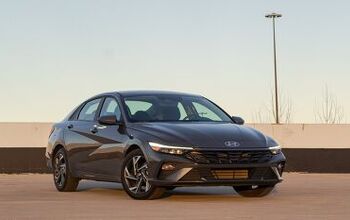
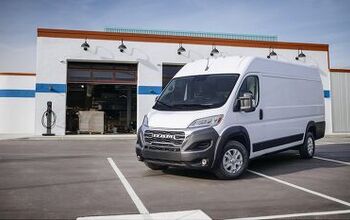


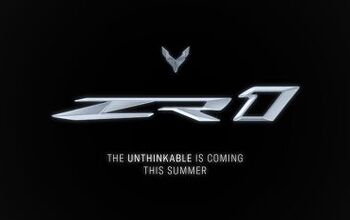





Comments
Join the conversation